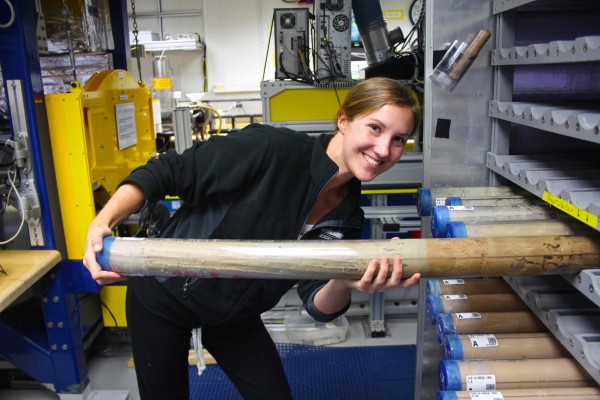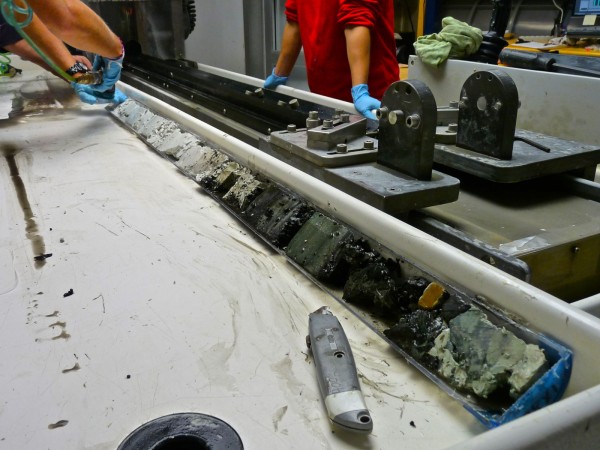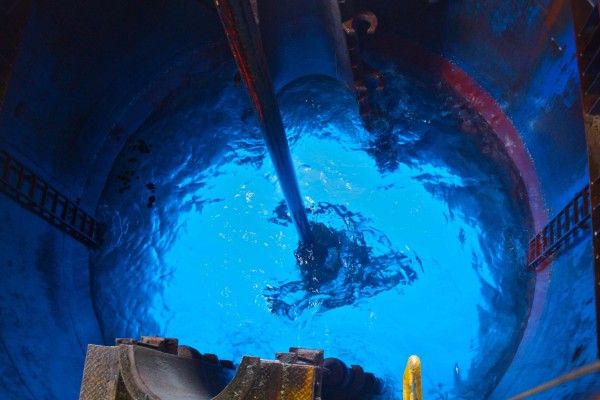org).
HOLLYWOOD, CA--(Marketwire - July 11, 2012) - The EMMY®-nominated animated children's series DINOSAUR TRAIN® will premiere the new "Big Big Dinosaur Week" episodes beginning August 13 on PBS KIDS® to explore the largest of the dinosaur species from different time periods. Encore broadcasts will run from August 17 to 19th (check local listings).
Throughout the week of August 13-17, 2012, "Big Big Dinosaur Week" will feature four new episodes that follow Buddy, Shiny, Tiny and Don as they discover the largest of the dinosaur species while exploring their natural surroundings. They'll also learn about nocturnal and diurnal animals, sunrises and sunsets, natural art and geysers. Additionally, "Big Big Dinosaur Week" will introduce a brand new train car on the Dinosaur Train -- the flatbed car.
The kick-off episode begins aboard the Dinosaur Train when the Pteranodon family gets the idea to travel around and meet some of the biggest dinosaurs. They even sing the song, 'The Biggest Dinosaurs,' before meeting Allie Alamosaurus, an enormous and friendly long-necked, plant eating sauropod.
The Jim Henson Company continues to encourage DINOSAUR TRAIN fans to join the "Nature Trackers Club." Kids and their parents can visit pbs.org/parents/dinosaurtrain/naturetrackers to download "Nature Trackers" activities and receive a free DINOSAUR TRAIN surprise to celebrate their achievement.
DINOSAUR TRAIN™ is an Emmy-nominated and Parents' Choice Silver Honor TV series, and it consistently ranks in the top ten shows for kids ages 2 to 5*. In DINOSAUR TRAIN, young viewers join Buddy and his adoptive family of Pteranodons, on whimsical adventures through prehistoric jungles, swamps, volcanoes and oceans as they discover basic concepts in natural science, natural history and paleontology. The Dinosaur Train, a colorful locomotive, is customized to accommodate all kinds of dinosaurs, and has the ability to visit the Triassic, Jurassic and Cretaceous worlds, while the Train's Conductor, a knowledgeable Troodon, provides passengers with fascinating facts along the way.
*Source: Nielsen NPower Live+7 AAs, August 2011-March 2012
Synopses
- "Remember the Alamosaurus / Sunrise, Sunset"
Premieres Monday, August 13 and Repeats Friday, August 17
Mom and Dad take the Pteranodon kids on an overnight camping trip where they watch both a sunrise and sunset, learning that the sun rises in the east and sets in the west. The kids also find out more about nocturnal (night-active) animals, and diurnal (day-active) animals.
- "A Heck of a Neck / Gilbert Visits the Nest"
Premieres Tuesday, August 14
Shiny is nervous about Gilbert's impending visit to Pteranodon Terrace. She goes into a cleaning frenzy, wanting everything to look perfect, and her siblings to act perfectly. When Gilbert arrives, everyone starts having fun except Shiny who feels ignored. Soon Gilbert and the other kids persuade Shiny to join them, and they all eat, play, and laugh together.
- "An Apatosaurus Adventure / Nature Art"
Premieres Wednesday, August 15
Mrs. Pteranodon cleans out the clutter from the family nest and the kids are amazed at the pile of stuff -- leaves, flower petals, pieces of wood, and shells. Tiny stops Mom from throwing out all the stuff, determined that she and Buddy, Tiny, and Don will find a use for it all. And, they do -- the Pteranodon kids have fun making nature art on the beach using the items from the nest!
- "Arnie Rides the Flatcar / Old Reliable"
Premieres Thursday, August 16
Mr. Pteranodon and Mr. Lambeosaurus take all the kids to see a field of geysers -- holes in the ground that hot water shoots out from! At the same time, Mrs. Pteranodon and Mrs. Lambeosaurus are relaxing nearby in soothing pools of warm water, called hot springs. In the end, the kids love seeing the geysers and then joining the Moms in their hot springs, while accidentally surprising Mr. Conductor, who is secretly trying to relax in his own private hot spring pool!
About DINOSAUR TRAIN
DINOSAUR TRAIN was created by Craig Bartlett (Hey Arnold!). Lisa Henson, Halle Stanford and Craig Bartlett serve as executive producers for DINOSAUR TRAIN. Each 30-minute episode includes two 11-minute animated segments and a live action sequence featuring a paleontologist that brings the show's natural science and natural history curriculum to life for preschoolers by giving specific facts about dinosaurs and comparing their features to animals of today. The series is produced by The Jim Henson Company, and co-produced with Singapore animation company Sparky Animation, with the participation and assistance of the Singapore Media Development Authority. UK production and financial support is provided by Ingenious Media. The Jim Henson Company oversees all ancillary exploitation of the property, including licensing and merchandising. PBS handles DVD distribution to consumer and education markets.
DINOSAUR TRAIN is a Parents' Choice Recommended TV series and its accompanying website received a Parents' Choice Silver Award and a prestigious 2010 Prix Jeunesse Award. PBSKIDS.org/dinosaurtrain welcomes more than 2.4 million visits each month, offering engaging content designed to continue dinosaur exploration beyond the television series, including printables, games, and a dinosaur field guide. Parents, caregivers and educators can find resources and activities to extend the series learning at PBS Parents (PBSPARENTS.org) and PBS Teachers (PBSTEACHERS.org).









